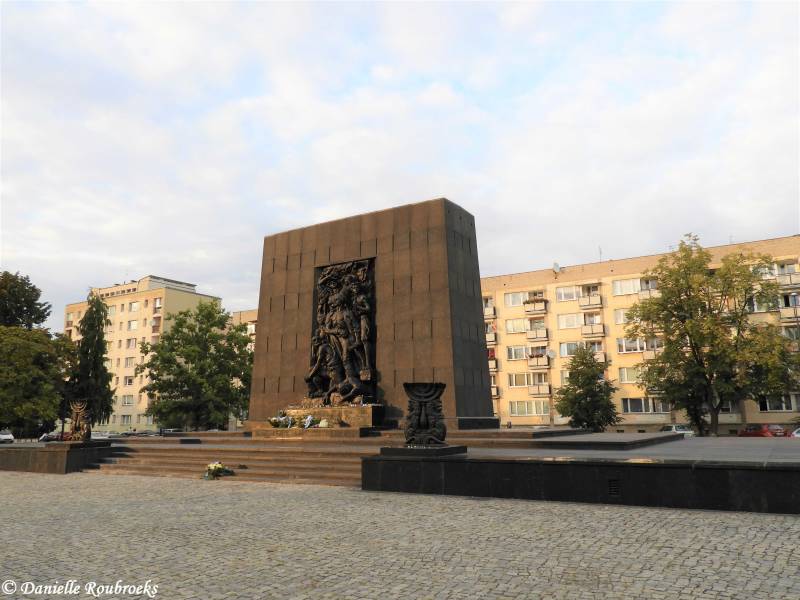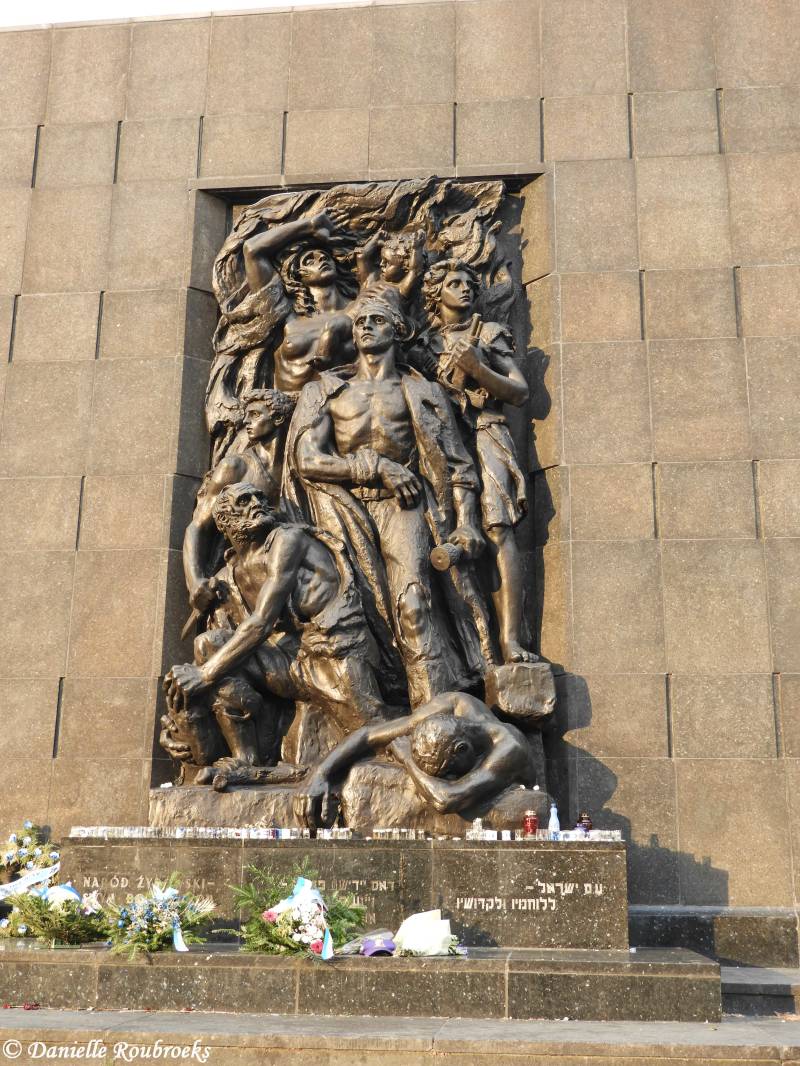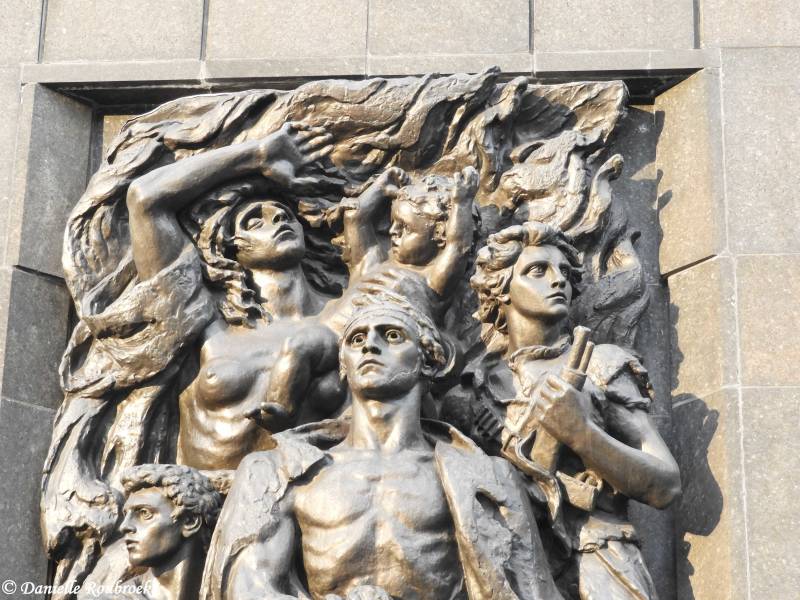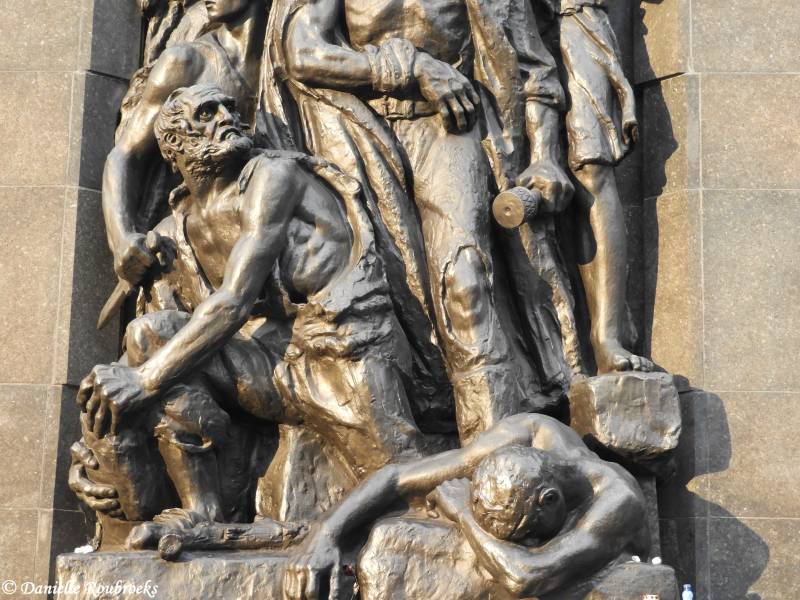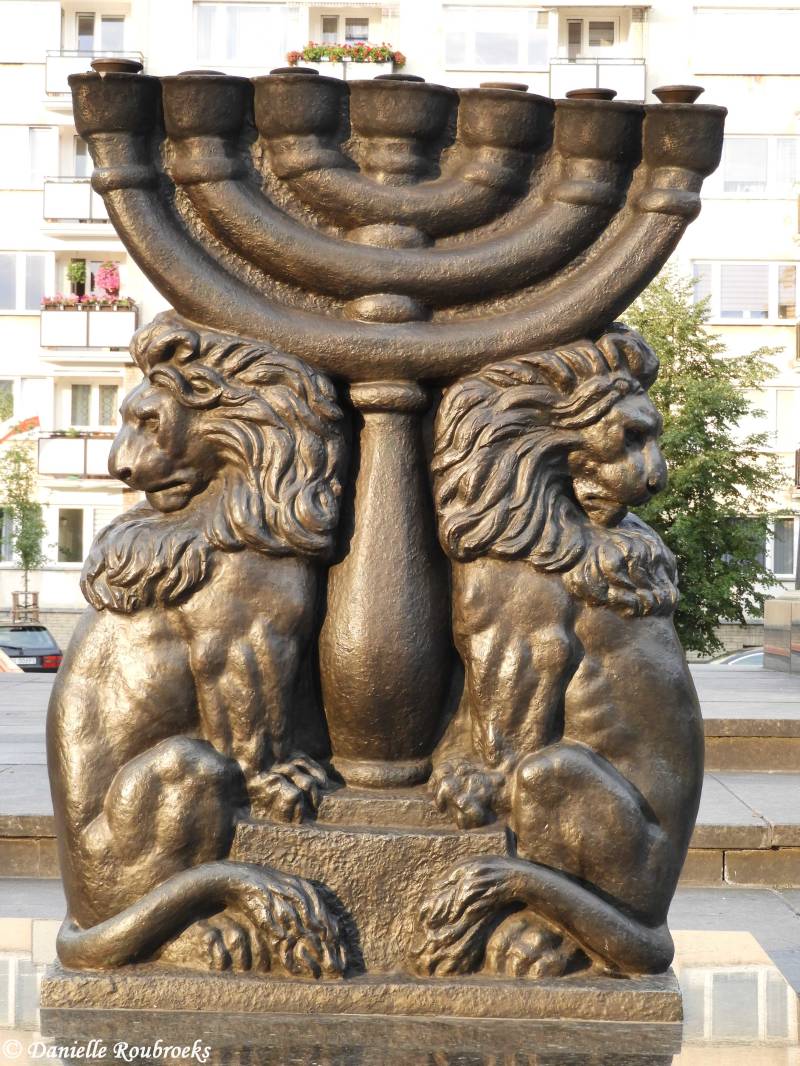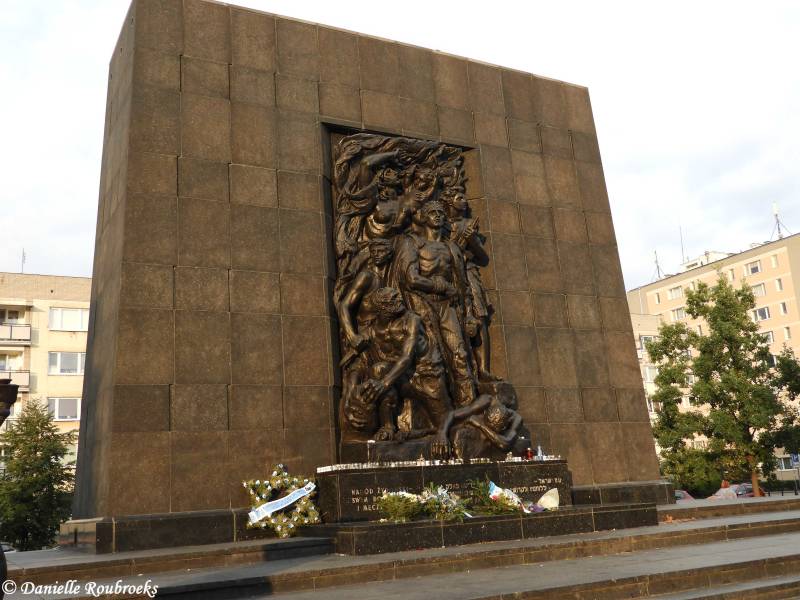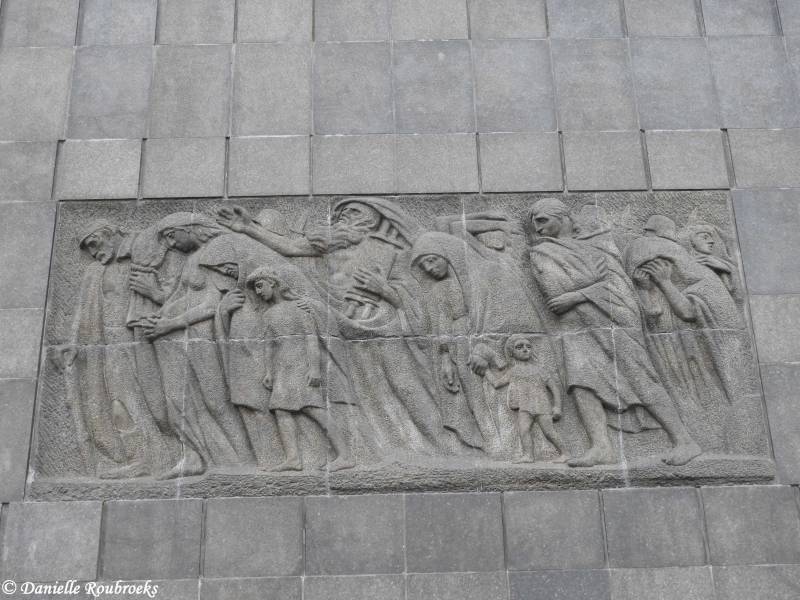Warsaw Ghetto Heroes Monument
Historical Information (source: Wikipedia)
The Ghetto Heroes Monument (Polish: pomnik Bohaterów Getta) is a monument in Warsaw, Poland, commemorating the Warsaw Ghetto Uprising of 1943 during the Second World War.
The monument was raised in the square bordered by Anielewicza Street, Karmelicka Street, Lewartowskiego Street and Zamenhofa Street. From August 1942 until the end of the Warsaw ghetto this was the last location of the Judenrat. Also the site witnessed several clashes between the Warsaw Ghetto Jewish partisans and the German and auxiliary troops.
The decision to build a monument to the Ghetto partisans was made as early as in 1944, by the Central Committee of Polish Jews in Lublin. The monument was designed by Leon Suzin. The first part of the monument, a small memorial tablet, was unveiled on April 16, 1946; the plaque was in a shape of a circle, with a palm leaf, a Hebrew letter "B" ב, and a Hebrew, Polish and Yiddish inscription: "For those who fell in an unprecedented and heroic struggle for the dignity and freedom of the Jewish people, for a free Poland, and for the liberation of mankind. Polish Jews". It was also decided to build a larger monument in the future.
The new, larger monument, sculpted by Nathan Rapoport (who worked under the supervision of Suzin), was unveiled on April 19, 1948. The monument stands 11 meters (36 ft) tall. As Rapoport himself explained, the "wall" of the monument was designed to evoke not just the Ghetto walls, but also the Western Wall (Kotel) in Jerusalem. The great stones would thus have "framed the memory of events in Warsaw in the iconographic figure of Judaism's holiest site". The western part of the monument shows a bronze group sculpture of insurgents - men, women and children, armed with guns and Molotov cocktails. The central standing figure of this frieze is that of Mordechai Anielewicz (1919 – 8 May 1943) who was the leader of Żydowska Organizacja Bojowa (English: Jewish Combat Organization), also known as the ŻOB, during the uprising.
The eastern part of the monument shows the persecution of Jews at the hands of the Nazi German oppressors. The monument has a three-language sign: "Jewish nation to its fighters and martyrs." The labradorite used in parts of the monument comes from the German supplies, ordered by Albert Speer in 1942 for planned Nazi German monuments


